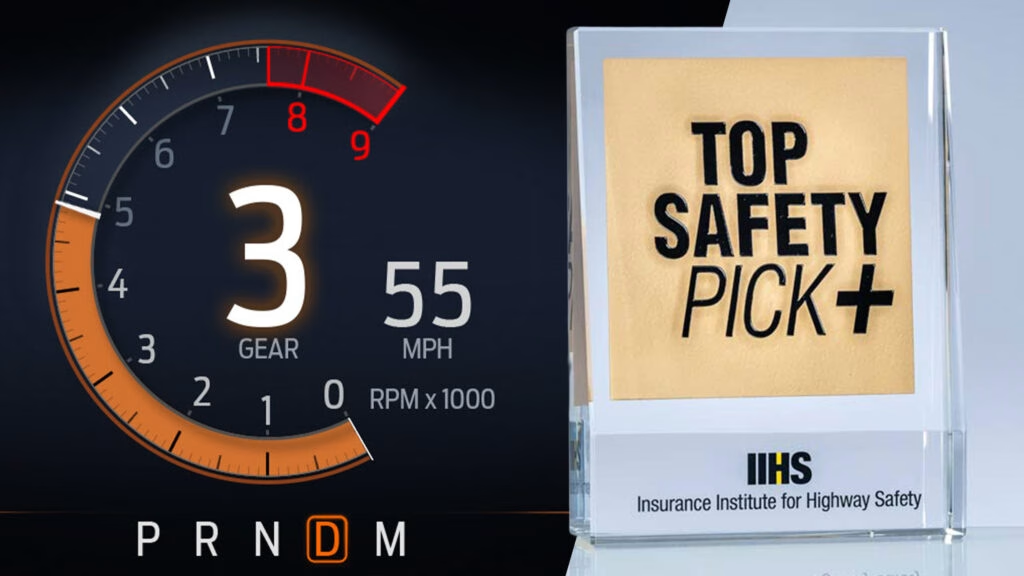Why Is the IIHS Raising the Bar for Car Safety in 2027?
If you’ve been following car safety trends, you know the Insurance Institute for Highway Safety (IIHS) doesn’t hand out its Top Safety Pick+ award lightly. But starting in 2027, the standards are getting even tougher. To snag that coveted sticker, new cars will need to come equipped with both anti-speeding technology and alcohol detection systems. It’s a bold move, but there’s a reason behind it: the IIHS estimates that up to 10,000 lives could be saved every year if automakers step up and adopt these features.
So, what’s driving this change? The IIHS, in partnership with groups like Mothers Against Drunk Driving (MADD), points to two stubborn facts: speeding and alcohol-impaired driving remain among the leading causes of fatal crashes in the US. Despite decades of progress—think better crash structures, airbags, and advanced driver-assist systems—these two behaviors still account for a huge chunk of road deaths. The new requirements are designed to tackle the root of the problem, not just the aftermath.
What Exactly Are Anti-Speeding and Alcohol Detection Technologies?
Let’s break down what these new systems actually do. Intelligent Speed Assistance (ISA) is already a legal requirement in Europe. Rather than slamming on the brakes if you creep over the limit, ISA typically uses beeps, visual warnings, or gentle nudges to remind you to slow down. It’s more of a persistent nudge than a hard stop. Some drivers find it annoying, sure, but the data is hard to ignore: the European Transport Safety Council credits ISA with helping to reduce speed-related fatalities across the EU.
Alcohol detection tech is a bit newer to the mainstream, but the concept is simple. The system monitors the driver’s breath or skin for alcohol and prevents the car from starting if blood alcohol concentration (BAC) is at or above the legal limit—usually 0.08% in the US. While ignition interlocks have been used for years in court-mandated situations, the IIHS wants to see this tech become standard, not just a punishment.
How Will These Changes Affect Drivers and Automakers?
For automakers, the message is clear: adapt or risk missing out on a key safety endorsement. The Top Safety Pick+ badge is a powerful marketing tool, and losing it could sway buyers toward competitors. Some states, like Virginia, are already moving ahead with laws that require speeders to use cars with ISA tech starting in 2026. So, in a way, the industry is being nudged from both sides—by regulators and by consumer expectations.
For drivers, the experience will change, but maybe not as much as you’d think. European drivers have lived with ISA for a while now. Most systems can be temporarily disabled, though regulators are debating whether that loophole should close. As for alcohol detection, privacy and practicality are big talking points. Nobody wants to feel policed in their own car, but the potential to save thousands of lives each year is a strong counterargument.
Are These Technologies Actually Effective?
Let’s get real: technology alone won’t solve every problem. But the numbers are compelling. According to the National Highway Traffic Safety Administration (NHTSA), speeding was a factor in 29% of all traffic fatalities in 2022, while alcohol-impaired driving accounted for nearly a third of deaths. If ISA and alcohol detection systems can even partially reduce these numbers, the impact would be massive.
A 2023 study published in the journal Injury Prevention found that widespread adoption of alcohol detection systems could prevent up to 9,400 deaths annually in the US. Meanwhile, European pilot programs with ISA have shown reductions in average driving speeds and fewer speed-related crashes. The result? Pure magic for public safety advocates.
What Can the US Learn from Europe’s Experience?
Europe’s rollout of ISA hasn’t been all smooth sailing. Drivers have pushed back against persistent alerts, and automakers have responded by making systems easy to override. But the underlying lesson is clear: when safety tech is widely adopted, cultural attitudes start to shift. What felt intrusive at first becomes just another part of driving. Over time, the hope is that US drivers will adapt in much the same way.
It’s also worth noting that Europe’s approach is evolving. Regulators are considering tweaks to make ISA more effective without being overly annoying. The US can learn from these growing pains, balancing safety gains with driver acceptance.
What’s Next for Car Safety—and What Should Drivers Do Now?
If you’re shopping for a new car in the next few years, expect to see more models touting advanced safety tech. Automakers will likely race to meet the new IIHS standards ahead of the 2027 deadline. For current drivers, it’s a good time to get familiar with how these systems work and what they mean for your daily commute.
The big takeaway? Safer driving isn’t about perfection—it’s about smarter adjustments. Start with one change this week, and you’ll likely spot the difference by month’s end. Whether it’s paying closer attention to your speed or thinking twice before getting behind the wheel after a drink, small shifts add up. And with the next wave of safety tech on the horizon, those shifts are about to get a whole lot easier.

